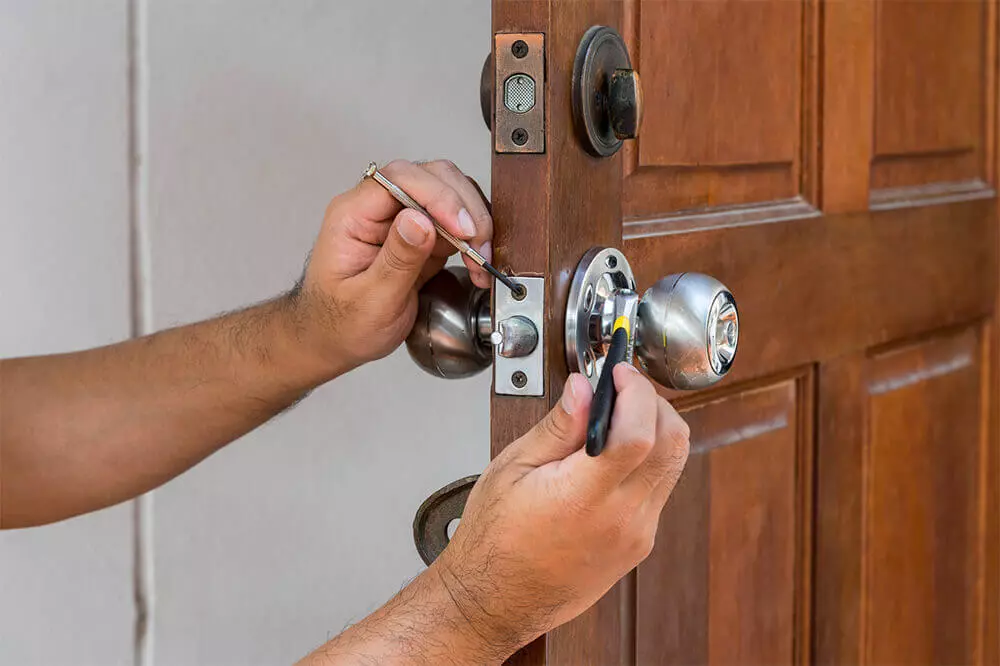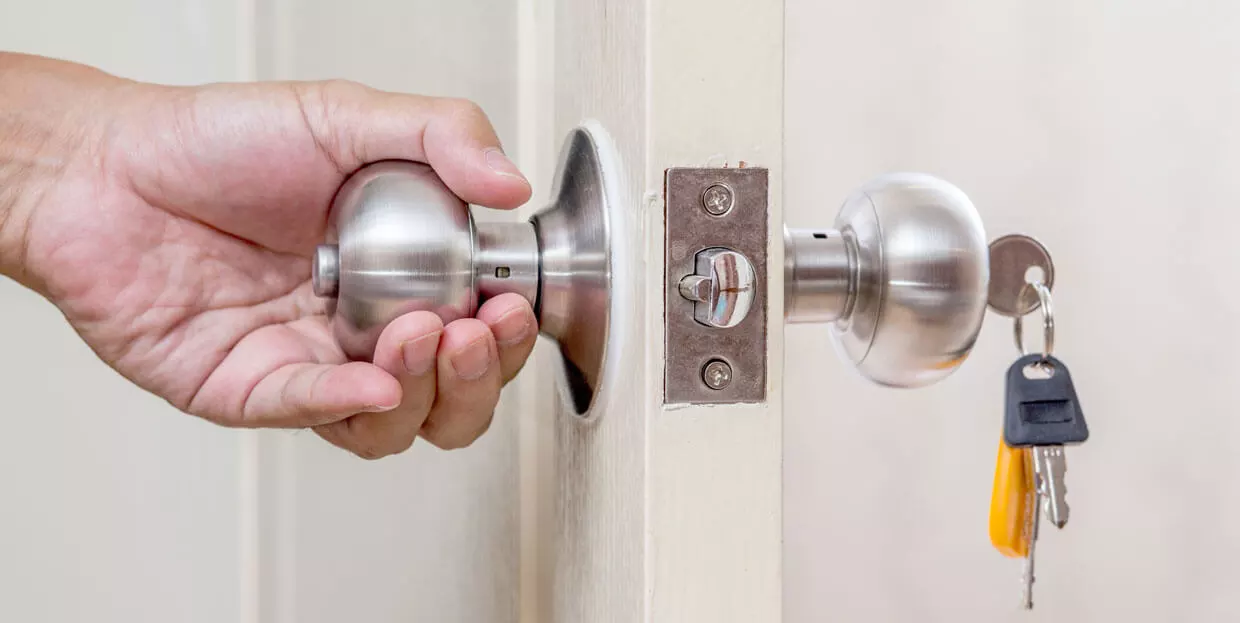Automatic door locks add convenience and security to modern homes and offices, but like all mechanical and electronic systems, they can fail. Whether you’re dealing with a jammed latch, a malfunctioning keypad, or a smart lock that refuses to respond, understanding the basics of automatic door lock repair can save you both time and money. This detailed guide walks you through the most common problems—and how to fix them yourself.

Content
What Is an Automatic Door Lock Repair?
An automatic door lock repair is a locking mechanism that engages automatically after a door closes. These locks often include smart features such as remote control, biometric access, and keypads. While they offer high-tech convenience, they also bring their own set of potential malfunctions.
The most common types include:
- Smart locks (controlled via smartphone)
- Keypad locks (requiring PIN codes)
- Biometric locks (fingerprint or facial recognition)
- Magnetic locks (electromagnetic mechanisms)
Understanding how these systems work is the first step in knowing how to fix a broken lock or troubleshoot any specific issue.
How to Fix a Jammed Lock
A stuck or jammed lock is one of the most frequent complaints among homeowners. It often results from dirt, misalignment, or mechanical wear.

Steps to Fix a Jammed Lock:
- Try another key: The current one may be bent or worn.
- Lubricate the lock: Use graphite powder or silicone spray—not oil.
- Clean the keyhole: Blow out debris with compressed air.
- Inspect alignment: If the door has sagged, adjust the hinges or strike plate.
When you understand how to fix a jammed lock, you can restore normal function without replacing the entire system.
How to Replace a Door Lock
If your lock is broken beyond repair, here’s how to replace a door lock safely:

What You Need:
- Screwdriver
- Measuring tape
- New lock (same size/type)
Replacement Steps:
- Unscrew and remove the old lock.
- Measure the backset and hole to fit the new lock.
- Insert the latch and align the locking mechanism.
- Screw in the new assembly and test the function.
This process is especially useful when upgrading from manual to automatic door lock repair or switching lock brands.
How to Rekey a Lock
If you’re worried about unauthorized access but don’t want to buy a new lock, you can rekey a lock. This changes the internal pin configuration so old keys no longer work.

Rekeying Instructions:
- Buy a rekeying kit for your specific lock brand.
- Remove the cylinder and insert the new key.
- Replace the pins to match the new key.
- Reassemble and test.
Learning how to rekey a lock is a great security move if you’ve recently moved into a new home or lost a key.
How to Fix a Broken Lock
When a lock stops turning or no longer latches, it may be time to dig into how to fix a broken lock. Here are some common failures and solutions:
- Worn latch: Replace the latch mechanism.
- Loose handle: Tighten the screws on the faceplate or inside.
- Rusty components: Clean or replace rusted parts.
Avoid forcing the mechanism—this could make things worse and turn a small repair into a replacement.
How to Fix a Smart Door Lock That Won’t Lock
Smart locks are popular but not immune to glitches. If your unit isn’t locking or unlocking, here’s how to fix a smart door lock that won’t lock:
- Check the battery: Replace if low.
- Restart the device: Remove and reinsert the battery pack.
- Check app settings: Ensure the auto-lock feature is enabled.
- Reconnect to Wi-Fi/Bluetooth: Ensure stable connectivity.
Often, a simple reset can solve most issues with smart locks.
How to Fix a Biometric Door Lock
Biometric locks use fingerprint sensors to allow access. If the scanner doesn’t respond, here’s how to fix a biometric door lock:
- Clean the sensor: Use a microfiber cloth.
- Update firmware: Check the manufacturer’s app or website.
- Re-register fingerprints: Ensure high-quality scans.
Biometric systems require regular updates and cleaning to remain reliable.
How to Fix a Keypad Lock Not Working
If you’re having trouble entering your home or office, it’s time to learn how to fix a keypad lock not working:

- Check battery level and replace if necessary.
- Re-enter access codes after resetting the system.
- Inspect for wear or damage on buttons.
- Test emergency override key, if available.
Always keep a backup key in a secure location, just in case your keypad malfunctions completely.
How to Fix a Magnetic Door Lock
If your magnetic lock isn’t working, understanding how to fix a magnetic door lock is key, especially for office or commercial setups.
Fixing Steps:
- Verify power source: Ensure a stable 12V or 24V supply.
- Clean the magnet plate: Debris or rust can prevent contact.
- Realign the door and magnet for a solid hold.
- Check wiring connections: Faulty wires may cut power intermittently.
Magnetic locks are reliable when maintained, but even minor disruptions can affect their performance.
Tips to Prevent Future Lock Problems
Maintaining your automatic door lock repair can extend their lifespan and reduce repair needs.

- Lubricate moving parts every 3–6 months.
- Clean digital surfaces gently with dry cloths.
- Replace batteries in electronic locks twice a year.
- Schedule professional maintenance annually.
With these habits, you won’t have to worry about repeated automatic door lock repair jobs.
Conclusion
Dealing with a malfunctioning lock doesn’t always mean spending money on a locksmith. Whether you’re learning how to fix a jammed lock, how to rekey a lock, or even how to fix a smart door lock that won’t lock, many solutions are within your reach.
FAQs
How do I fix an automatic door lock that won’t lock?
Check the battery, clean the mechanism, reset the system, and verify Wi-Fi/Bluetooth connection for smart locks.
Can I repair a jammed lock without replacing it?
Yes, you can fix a jammed lock by lubricating, cleaning the keyhole, or realigning the strike plate.

Ryan Hatch is a master locksmith with 15 years of experience in residential and commercial security. When not writing, he enjoys hiking and tinkering with vintage locks.
















